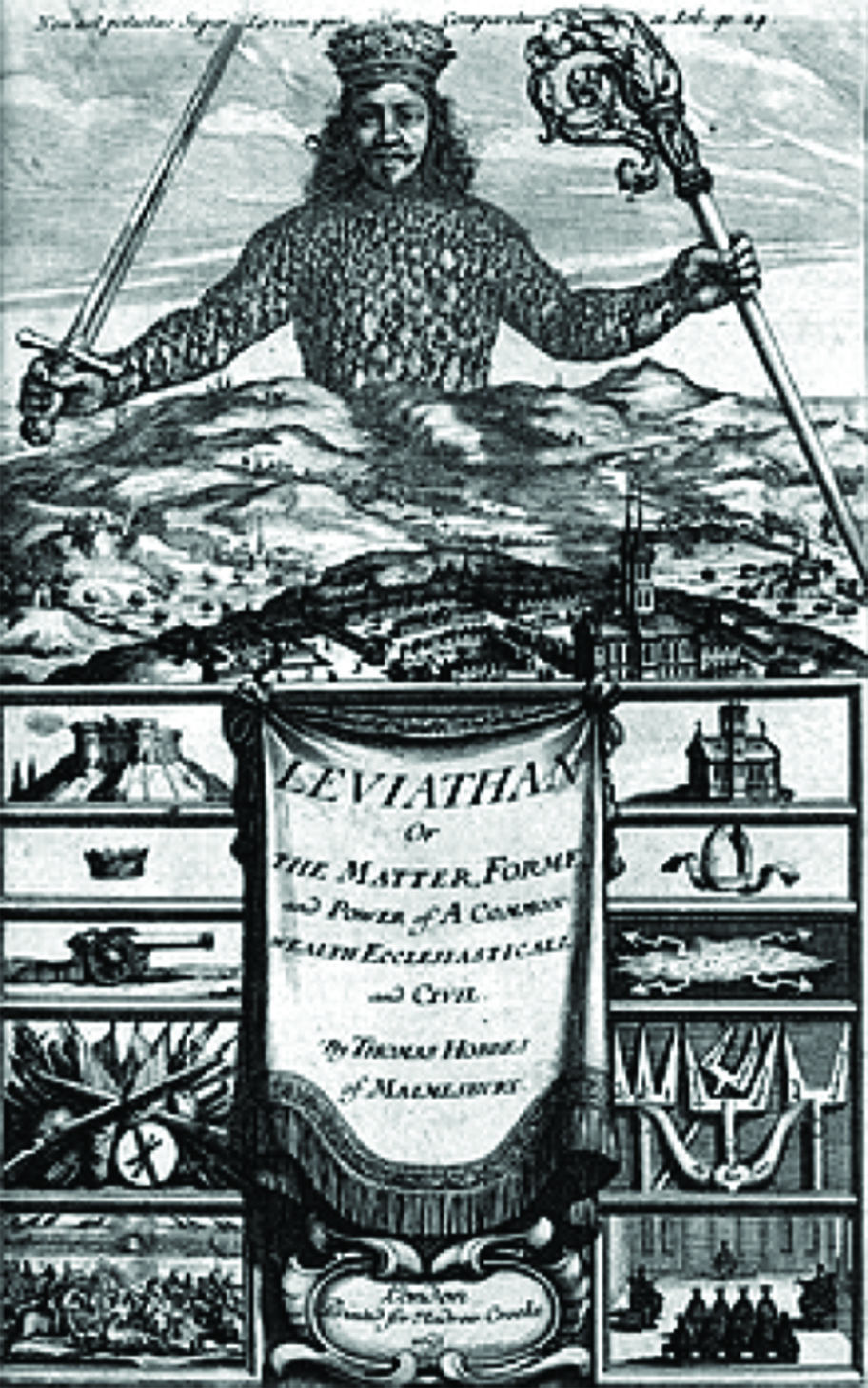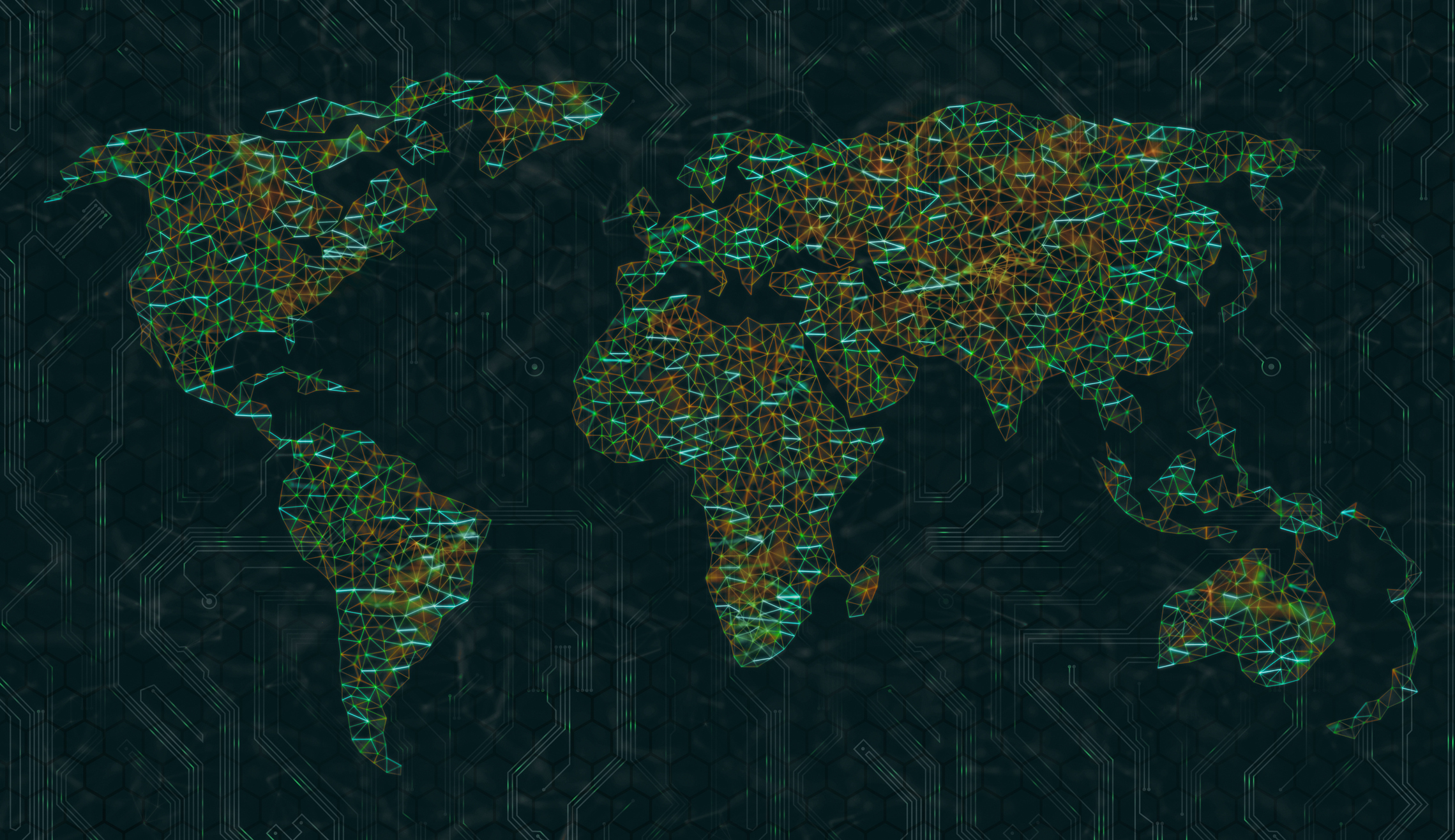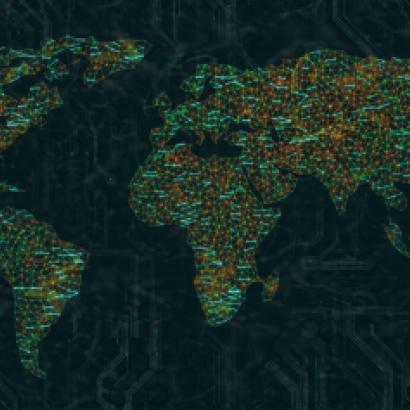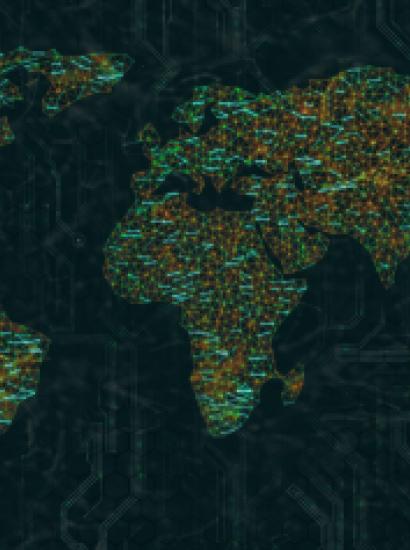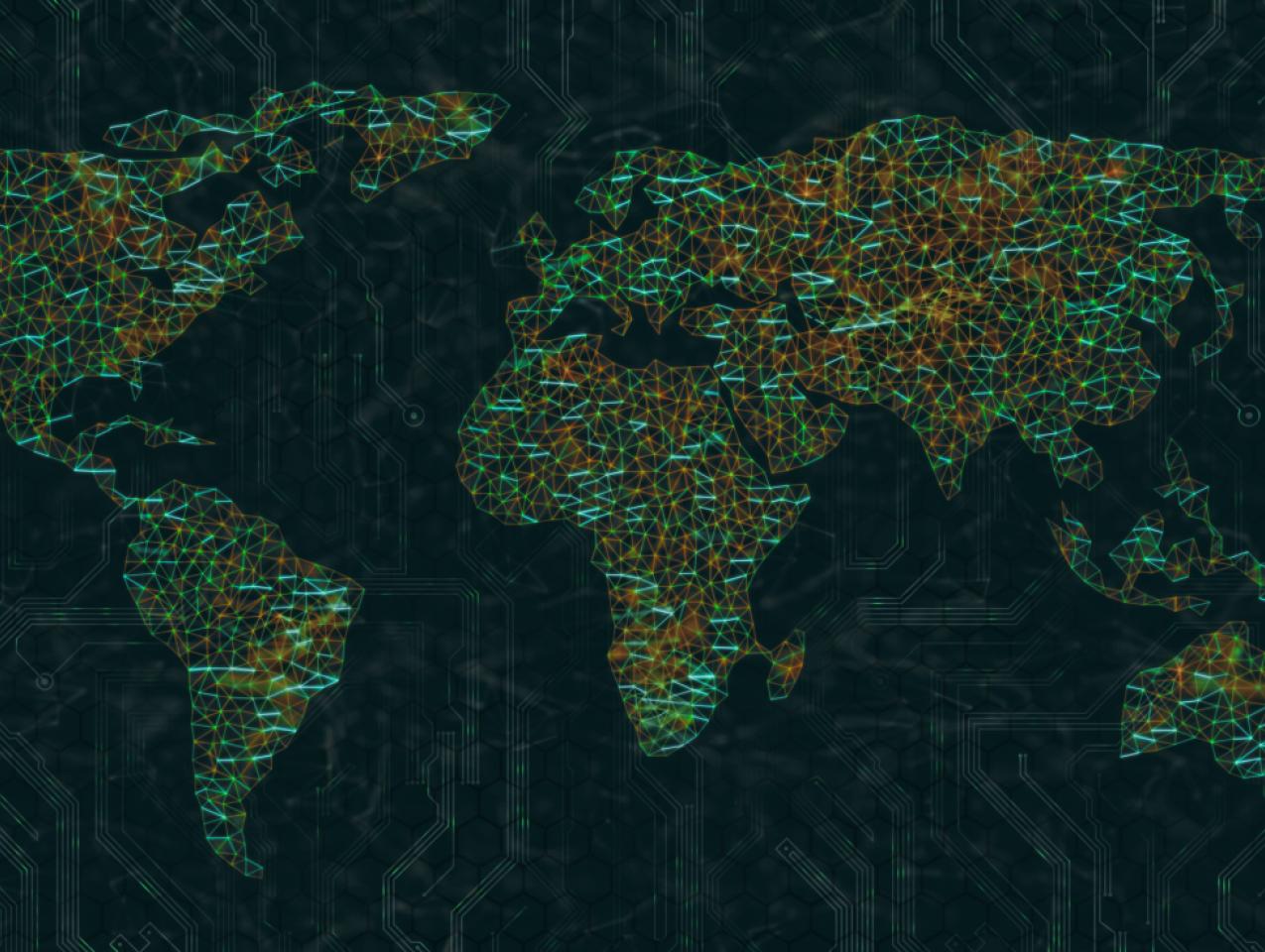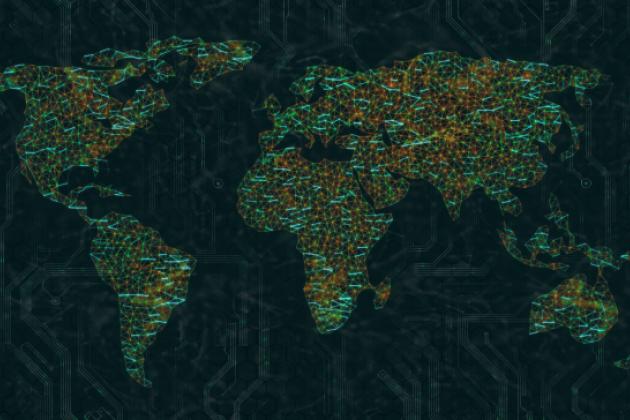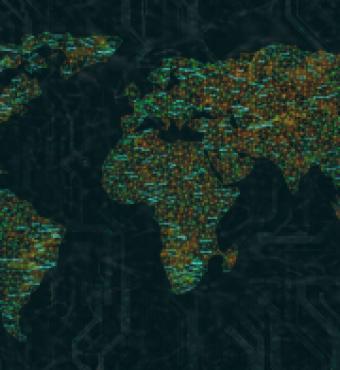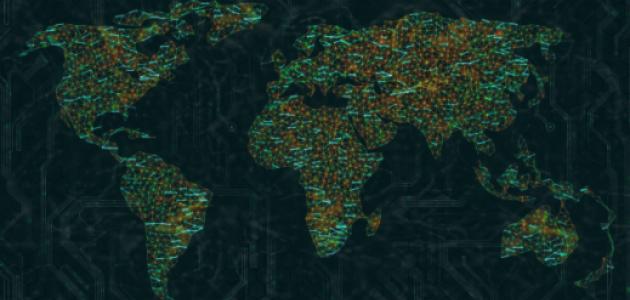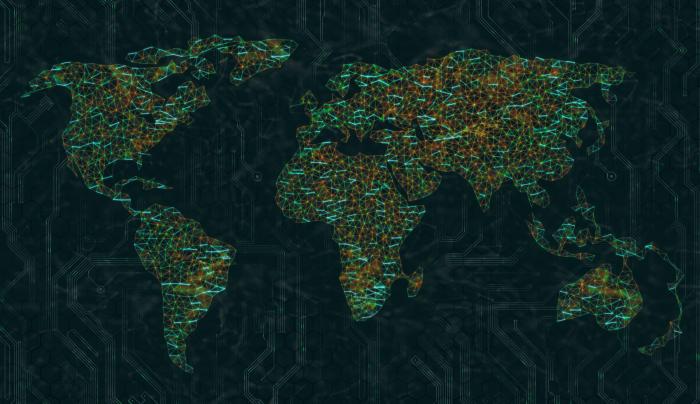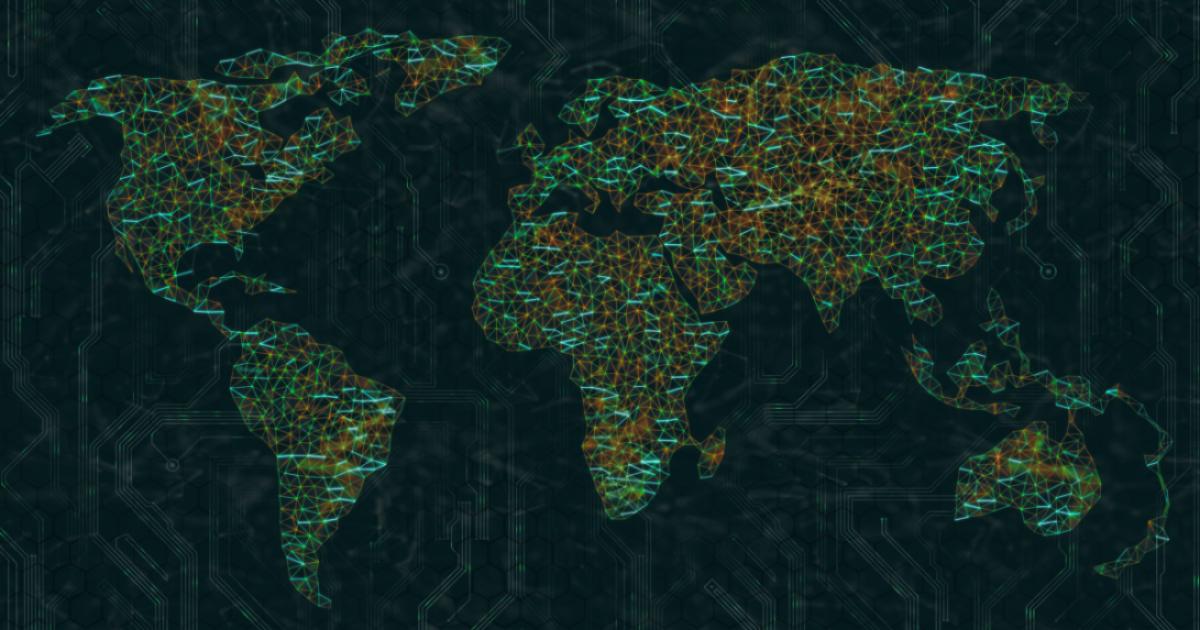- Energy & Environment
The tension between the concepts of “civilization” and “the forces of history” can be tracked around the world from deep antiquity until at least the early 20th century. Since then, for many political reasons, neither the idea of civilization or historically transformative forces has been considered worthy of attention or even to possess intellectual legitimacy for serious world leaders. This may now however be changing as, for example, the European Union’s disregard for the continent’s civilization (as in the determination not to refer to Christianity in its draft constitutions) has troubled many. In contrast, the People’s Republic of China under President Xi has done much to identify the PRC today with the Tang and Ming dynastic civilizations and earlier examples of Confucian China. In each case the concept of civilization as a force has gained some recognition. And in this 21st century, the idea of globalization as a force of history has produced assumptions that the world may have created its first planetary civilization, a perception that has been shaken by the backlash against the effects of globalization evident on every continent; that is, that this latest force of history may not have been as beneficial as earlier assumed, or at least not as well-managed.
The question now requires reformulation: forces of history do indeed exist and produce a determinative influence on civilization. The challenge is to identify such forces and analyze them to determine whether they are in tension with each other to the detriment of civilization or whether they can be integrated so as to make civilization sustainable. This paper will argue that forces today are not in phase with one another and that modern civilization, such as it is, may not survive those tensions.
Two examples, one ancient, one modern, stand out. In each case, the forces of demography and technology were not integrated with intellectual and cultural forces, with the result that a particular civilization declined and eventually collapsed.
Ancient China is a well-known classic case, almost a cliché. China’s advances in technology were breakthroughs in world history: the invention of paper-making and moveable-type printing; gunpowder; iron and steel smelting; the compass; deep-earth drilling, and beyond these, innovative technologies in the art of living: porcelain, tea, silk-making, and a unique cuisine. Yet many of these technologies somehow were not, we still are not sure exactly why, capable of successful integration into the otherwise brilliant aspects of a poetic, artistic, and philosophic culture. Along with this came immense challenges of language and communication between the regime and the people. Confucius’s seminal Analects turn on the moment when a ritually governed “Theatre State” shifted to a state of written laws, in later German terminology a Rechtsstaat or law-governed polity. The difficult tonal and character-founded language enhanced yet obstructed China’s ability to make the transformation from a traditional to a modern civilization. From this angle of understanding, the “Harvard School” of Chinese history—that an eternal, patient, superior Chinese culture may confidently look down upon while smoothly absorbing all foreign forces and influences—becomes suspect: Chinese history was shaped, ruled, and distorted seriatim by the Mongol Yuan dynasty, the Manchu Qing dynasty, by the very un-Chinese practices of Buddhism, and then by semi-colonial powers bent on exploiting the Central Kingdom. The strange 19th-century Taiping Tian Guo, a national-scale anti-imperial movement driven by a misinterpreted version of Christian missionary influence was followed in the 20th century by the German ideological communism of Marx and its western-based redefinition by Mao, which, in the Cultural Revolution, was dedicated to obliterating China’s traditional civilization. Now in the 21st century we see Beijing’s determination to blend Marxism with capitalism—another Western concept—while improbably proclaiming that Confucianism and Maoism harmonizes them both. The concatenation of these disparate forces would amount to what Mao recognized to be “antagonistic contradictions,” clashing conceptions that would threaten to tear the society apart.
If the Chinese case exemplifies how a strong culture of arts and letters can obstruct and neuter the use of science and technology, Germany demonstrates the opposite. Nineteenth- and early 20th-century Germany was the epitome of culture, the land of Goethe, Mozart, Beethoven, Haydn, Handel, and Mendelsohn. The architecture of Karl Friedrich Schinkel (1781-1841), the archeology of Schliemann, philology of Müeller. Germany’s infatuation with, and emulation of, the most glorious of ancient civilizations is described in the cultural history The Tyranny of Greece over Germany.1
During the same period, Germany became the world leader in science, technology, and higher education. This compelled American universities in the late 19th century to follow Germany’s lead in curricula and the methodologies of all the major disciplines. New universities, destined to become great centers of learning, sprung up: Cornell, Chicago, Johns Hopkins, and Stanford (whose motto credited Germany’s influence: Die Luft der Freiheit weht). German engineering was foremost in the world, producing what was called a “cult” of Technik. It is hard to think of any great civilization in history as notable as Germany in its balanced pairing of high culture with high technology. How then could it happen; how could the Nazi rise, its war aims, and its genocidal attempt to eradicate the Jews have happened?
Somewhere in these national stories lies the answer: in demography as with the vast phenomenon of peoples in unstoppable movement (in German, Völkerwanderung) and in language and communication generated or influenced by technology. China from 1644 to 1911 had to be ruled in both Manchu and Mandarin; its “march” west demographically brought the vast lands of the Tibetans, the Mongols, and the Uyghurs into an empire, which still strives to control those bordering nations.2 Germany lost a war of empires in the Great War of 1914–1918 and sought to deal with that trauma by inventing a language of resentment and victimhood that required redress. Germany’s great achievements in the 19th and early 20th Centuries made it a magnet for attracting migrants from the territories to its east. The nation’s anxieties could only, it was thought, be overcome by its own expanding population taking the form of a push outward, a Drang nach Osten, to the east; Germans were told that their future demanded Lebensraum—living space taken from territories and peoples far beyond Germany’s already extensive national boundaries.
These examples are not intended to suggest any one-on-one comparison between 21st-century America and 20th-century Germany or 17th-century China. They are however background to addressing the matter of Forces of History as they encounter civilizations.
Although such forces cannot be proved scientifically, they undoubtedly have an influential effect on human behavior and can be traced across the centuries in intellectual history. Here we must turn to the humanities quadrant of the universe of knowledge. The sciences and technology—STEM—are one of mankind’s greatest achievements. But the most difficult and important dimensions of life, questions that never can be permanently answered, reside in a realm of uncertainty. While the sciences and technology deal with certainty, the humanities are the only body of knowledge that deal with uncertainty—not to seek to provide replicable solutions, but to prepare us at least to confront uncertainty with some degree of assurance, and to “know” situations in the largest sense. The unrecognized meaning of Thoreau’s Walden is that he realized he could not know the pond by measuring it.
Intellectual history provides an angle of approach that enables us to have some understanding of why we do what we do. There is for example, no way to understand how and why the new United States was designed by the Founders to work without knowing that they read the great texts of the ancient world and made a carefully deliberated choice to model the American political system on Rome rather than on Athens. We cannot prove it scientifically, but nonetheless undeniably, the American founders saw something like a “force of history” that moved from the dangerously direct and swift Athenian democracy to the “mixed constitution” of Rome, which, at least ideally, changed politics from a cyclical conception of time to one of time as linear with a starting point, a trajectory across time, and an objective (“life, liberty, and the pursuit of happiness”). Americans of the late 18th century, like Romans of the early Republic, declared to themselves that “We are going to be a democracy, but not the kind of democracy that ruined ancient Athens.” (See Federalist No. 6 by Hamilton.)
One: Democracy, the Force
On this basis we can address the Forces of History that affect us today. Several forces can be discerned, but they all come together as one world-spanning force of several dimensions, all interlinked. It is the Force of Democracy and its elements of evolving human consciousness, of language, of religion, and the modern era’s form of communicating learning: the book. Underlying all this is the issue of human nature. The Force of History we call democracy (liberty) may be not only a bulwark against The Force of Nature we know as domination, but both are recognizable as forces of nature.
The Geostrategic Arena, Demanding and Producing Democracy: America
Alexis de Tocqueville’s Democracy in America, correctly described as “The best book on democracy and the best book on America,” an undoubted world classic of political thought, is grounded on the assertion that democracy is a force of history. This is evident, Tocqueville says, by the record of world affairs for the past 600–800 years. It will be up to the new United States to determine the fate of this force; it will succeed, fail, or collapse depending upon whether the Americans can find and somehow keep in balance the parallel strivings for liberty and equality. So an historical force is not destined to remain a force; it can and must be controlled, steered like a canoe shooting the rapids. Stay in the channel, avoid the boulders and the falls—portaging at times—and if possible, be designed like a bark canoe, with a bottom supple enough to ride over the rocks without being torn apart. Tocqueville’s text gives a “logic chain”: religion informs “mores” (“habits of the heart”), which inform laws, which ensure liberty, which circles around to protect freedom of religion. And who upholds religion? Not, according to Tocqueville, churches or clergy but women.
“If anyone asks me what I think the chief cause of the extraordinary prosperity and growing power of this nation, I should answer that it is due to the superiority of their women.”
The authors of the Federalist Papers—Hamilton, Madison, and Jay—had earlier made clear their own sense of the momentous significance of the American experiment. The very first paragraph of Federalist No. 1 in a reference to Jean-Jacques Rousseau, not named but unquestionably the adversary—because Rousseau had promulgated a form of democracy that would install a tyranny—declared:
“It has been frequently remarked that it seems to have been reserved to the people of this country, by their conduct and example, to decide the important question, whether societies of men are really capable or not of establishing good government from reflection and choice…the crisis at which we are arrived may with propriety be regarded as the era in which that decision is to be made; and a wrong election of the part we shall act may, in this view, deserve to be considered as the general misfortune of mankind.”3
Geography, religion, and technology in various combinations seemed by design to favor democracy. The New England Puritans, defining and describing themselves as an “Exodus” out of English bondage on an “errand into the wilderness” in search of freedom built a congregation-based, covenanted, and Hebracized culture in which the Meeting House could easily turn into the Town Meeting. In “The Great Awakening,” Jonathan Edwards’ sermons against predestination (“Sinners in the Hands of an Angry God” was called “the first American Declaration of Independence”) could logically be transformed into a decision-making, voting individual. Motivated to found colleges in the Northwest Territory and beyond, the country later could justifiably contemplate the Puritan origins of the American self.4
The Mississippi River Valley is now coming to be seen as the only one of the world’s great river valleys—Nile, Indus, Tigris/Euphrates, Yellow River—to produce a democratic culture. Under the “Hydraulic Theory” of history5 major river systems always created vast autocratic regimes which accumulated power from the imperative to politically distribute water resources to agrarian societies along its banks. The Mississippi would be the exception; the reasons include LaSalle’s exploration of the entire river course, which would eventually produce a Louisiana Territory for U.S. expansion; Ben Franklin’s printed diplomatic treaties with the Iroquois; Mark Twain’s riverboat pilots, whose innovative skills offered a new “common man” hero for national emulation; and the Corps of Engineers, who came up with a “levee” theory of river control that fragmented, not collectivized, water use, which unintentionally promoted a classless form of shared effort to sandbag against floods. And the uniquely diverse and multiracial city of New Orleans, which would produce the arts of a distinctive civilization displayed from Faulkner’s novels to Stanley Crouch’s “Blues to Be Constitutional.”
Other free civilizational cultures would compound American civilization: the cattle-driving Southwest, the farming lands made possible by “the Plough that Broke the Plains,” the Comanche Empire, Navaho, Sioux, and other Native American nations; Spanish missions and Hispanic laborers. And, undeniably, the Civilization of the South, which Tocqueville did not include as qualifying for his Democracy in America and which could only be absorbed by the nation’s most horrendous war. Now under relentless political assault and derogation, the American South’s enduring culture has been and will be inextricable from this vast democratic conglomeration.
Consciousness
These American examples bear out Tocqueville’s claim that a force of history exists in the form of a widening drive for freedom that can be felt around the globe.
The imposing German philosopher Georg Wilhelm Friedrich Hegel (1770-1831) summed it up in one sentence: “History is the history of the consciousness of freedom.” Hegel, a canonical influence in philosophy, concentrated on history because the Enlightenment had made it the replacement for theology as the intellectual-moral realm where humanity’s greatest questions would have to be addressed. This would make Aussenpolitik (foreign policy) the most difficult and consequential of all fields of study and action.
Hegel’s thought would become the basis for Francis Fukuyama’s immensely popular book of 1992 The End of History, which then and ever since has been fundamentally misunderstood. Hegel did not believe that history was actually at its end; what was over was humanity’s never-ending quest for the best form of governance. Herodotus on his wide-ranging travels around the ancient Mediterranean had reported on the countless varieties of political systems, a different one for every valley and its nation. What Hegel sensed in 1789 in the French Revolution and then in Napoleon’s attempt to expand the Rights of Man and the Citizen through his “empire and Grand Armée in the early 1800s was that the answer to the question—not its actualization—had been found: a free society governed on liberal principles. What Fukuyama was writing about connected 1789 to 1989 when the collapse of the Soviet Union caused emerging nations to declare their desire for “democratization” and appealed to the United Nations for assistance in how to run a multiparty political system and organize free and fair elections. The UN, grudgingly changed its position on democracy, a major shift in the consciousness of “The World Organization.” “Democracy” is not a word that appears in the UN Charter. UN officials had therefore considered democracy simply to be one of the many forms of governance that legitimately could be in power within any Member State of the UN; to the international civil servants this meant that democracy was just one of a group of governmental forms along with socialist, or fascist or communist-ruled polities; democracy had no special status. But with the collapse of the Soviet Union, many formerly communist-leaning countries wanted to “democratize” and the UN suddenly felt the necessity to shift its position: it was explained that government by the consent of the governed was primarily procedural rather than substantive and could be re-conceived as an intrinsic part of the procedurally-based Westphalian modern international state system. The UN expressed this in early post-Cold War UN Security Council resolutions, which gave authorization to democratization after the 2003 war against Saddam Hussein’s Iraq.
Something like this already had been intellectually if not politically produced as an historical milestone by Immanuel Kant’s 1794 essay “Perpetual Peace,” which argued from the Enlightenment’s “reasoned” point of view that the best form of governance would be a republic because when state sovereignty ultimately resides with the people they will be inclined to favor peace and disinclined to warfare. Kant’s essay would be a procedural addition to the 1648 Westphalian system but not actually employed as such until the 20th century as “the Kantian peace project.”
The consciousness of freedom was enlarged by Sigmund Freud. This was made visual in the 1991 exhibition at the Stanford Art Gallery of editions, letters, and artifacts of Freud’s career. Freud observed that patients recounted their dreams in free associations, and from his letters we learn that he concluded in 1895 that the hidden meaning of dreams lay in the disguised fulfillment of an unconscious wish. In this period of Freud’s greatest creativity, he published in 1900 Die Traumdeutung, in English The Interpretation of Dreams, which demonstrated how unconscious processes influence conscious thought in normal behavior; this would revolutionize modern thought. The recognition of this phenomenon was liberating, a momentous contribution to the consciousness and personal awareness of what otherwise had been inexplicable behaviors. Thus it was believed that Freud had “discovered” the Unconscious. Of course the unconscious had always been there at work in every human being since the emergence of human life. But with Freud’s breakthrough it could then be perceived that the influence of the unconscious had been evident all along in the great works of world literature.
This also was revealed in one of the 20th century’s most famous and influential works of literary analysis, Mimesis, written by Erich Auerbach, a refugee from Nazi Germany living in exile in Istanbul during World War II. Remarkably, it was said that as a refugee Auerbach had produced this highly erudite and detailed work without access to his own or any other library of literature.
Auerbach began by analyzing passages from Homer and the Bible, to illustrate the immense difference between classical (Athenian) literature and scriptural (Jerusalem) texts, the former being highly detailed and specific while the latter are spare, leaving much space for the reader to enlarge and explicate the work for its meaning. Both versions provided freedom: to say what the author wanted to say in the first case, and to be creative in explaining the narrative in the second. Auerbach then moved across time from Tacitus, Augustus, Dante, Goethe, Flaubert to Virginia Woolf, revealing a trajectory moving from ancient warrior heroes to modern common people, and from momentous events of war and diplomacy to narratives of everyday life, all to demonstrate democracy as a force of history.
At this moment in the 21st century, the climate of opinion is that democracy is a spent force and is on its way to the ash heap of history. Not so; there have been such “down” times before. Wars have been waged to overthrow and end democracy, and all those wars have been lost by democracy’s adversaries. The Force is still with us.
Two: Ubiquitous Duality
The Force of History Versus The Force of Nature
This is the foundational duality of the human condition: freedom for people, or domination over them. Reinhold Niebuhr stated it in what would become a classic declaration: “Man’s capacity for justice makes democracy possible; but man’s inclination to injustice makes democracy necessary.”6
The great works of the mind, across the centuries, can be understood as expositions on the imperative of recognizing dualities as the key to contending seriously with life. Here, in truncated forms, are some examples:
• The College Entrance Examination Board (the SAT people) in 1995 published Orators & Philosophers to describe the historical evolution of the idea of liberal education as a struggle between two contending points of view—one persuasive and the other reasoned—and their alternation from antiquity to the present.
• Thucydides’ Peloponnesian War explores issues of war and peace, idealism and expediency, choice and necessity, autocracy and democracy, through an array of speeches as attempts to manage reality. The tensions within these dualities producing a “manual of statecraft” for the ages.
• Plato’s Socratic dialogues present the duality in its most profound interaction: they are “spoken” one-act plays but written down; neither form seems separable from the other. Plato’s Republic sets out how strict reason produces the perfect state—a tyranny—while the individual soul’s uncertain adventures, represented by Odysseus, produces the better decision.
• Aristotle concludes his Politics—in a chapter colleges avoid assigning—by examining the ubiquitous duality of “Dorian” and “Phrygian.” These two musical modes represent, he says, male and female principles which are at work in every dimension of life. Men and women clearly display this duality, but one need not be gendered male to practice war, or female to practice diplomacy. The Asian version of this is Yin and Yang.
• St. Augustine’s great work could be renamed “On Duality” as might be expected from its title The City of God as the other, greater side of “The City of Man.” From this base, Augustine’s thought is packed with the dualities that make up modern life: public and private, body and soul, art and science, cyclical and linear time, realist and idealist, etc. Augustine like his predecessor Plato instilled in the human psyche the monumental dual concept that “There is an ordered universe other than this one.”
• Thomas Aquinas may have pulled off the greatest and most consequential project of understanding duality and making the most of it. Thomas recognized that, as Raphael would portray in his “School of Athens,” Plato points up to a higher truth while Aristotle gestures down to say that knowledge can be found here on earth. Thomas, turning away from Augustine’s “This world is not our world,” integrated both with theology and history to argue that this world, as God’s creation, must be studied in order to know it and know God. This would open the door to modern science.
• Machiavelli, who stands in the “realist” lineage from Augustine, structured his classic text The Prince around the concept of “two moralities”; that is, one moral standard for the ordinary person and a second one for “the prince” who may have to take harsh decisions beyond ordinary moral norms in order to secure the safety of the people.
• Hobbes in Leviathan provided the modern state with its theory: the social contract. That theory rested—and still does—on the concept that the human being has a dual nature. Hobbes lays stress on “the Artificial Person;” you are of course you, but there would also be “the Sovereign” as an enduring abstract “person” to which the people would deliver their rights in return for security. This was depicted in the most famous political cartoon in history (see Figure 1), which shows the Sovereign as an artificial person looming over the body politic. A king or queen or president could for a term inhabit the artificial personage, but as monarchs would pass away, the artificial person would remain ever-present.
• The U.S. founding is marked with duality. Whether done consciously or by instinct, dualisms dominate the American political conception. Among these we see:
o The United States is the only country with two founding documents: The Declaration of Independence and the Constitution, the first displays pre-Enlightenment natural law and the second a secular modern law. The American president is the only primary leader of a country who is both Head of Government and Head of State.
o In the Federalist Papers noted above, Hamilton’s derision of the Athenian leader Pericles and determination that the United States would be a free country but not one on the model of ancient Athens’ democracy finds its source in Pericles’s greatest speech in which he praises Athens for its “single chamber assembly,” which provides speed of decision-making. The United States, in contrast, would have two houses of Congress and would be not a direct democracy but, as Franklin put it to the people, “a republic, if you can keep it.”
o This fundamental duality would be the topic of contestation between the dual factors of Federal and State power. Would it be “The United States” or “The States United”? John C. Calhoun powerfully argued the latter, and lost.
o Tocqueville, who must be cited again and again, provided yet another unique American duality when he wrote that in the United States alone religion and liberty are compatible because in America, liberty sees religion as the cradle of its birth while religion sees liberty as the protector of its exercise.7
• The ultimate American duality, as David Hackett Fischer monumentally portrayed, is Liberty and Freedom. Freedom means the rights of belonging in a community of free people. Liberty means individual independence. The tension between them has been a source of conflict and creativity throughout American history: “Like DNA these notions have recombined in new forms with every generation.”8 Reinhold Niebuhr at mid-20th century expressed it specifically: advocates of democracy are inclined to believe that freedom is primarily a necessity for the individual and that the community and social order is to uphold minimal restrictions so that the individuals can express their choices. “Actually the community requires freedom as much as the individual; and the individual requires order as much as does the community.”9
This catalogue of dualities assembled above reaches far back into the Great Books for their instruction, or at least guidance on human nature. Much of that body of knowledge was informed by religion. That source however was shattered, or cast aside, with the invention of the modern in the Renaissance and Enlightenment when, as Kant declared, humanity had come of age, stood up, and put aside all “foundations” on which it had relied; now everyone would have to reason anew, from the ground up. The American polity—The United States—came into being just at this break point in history. The U.S. has tried to hold on to dualities while the modern world has gravitated toward the “uniate” in every field of thought and action. A scan of these pages reveals that America has been pulled toward a uniate direction in case after case, to a point where the founding “Idea of America” is at stake.
From Duality to Binary
That most emblematic novelist of modern America literature—or at least the only novelist that it seems current American students have read—F. Scott Fitzgerald—summed it all up: “The test of a first-rate intelligence is the ability to hold two opposed ideas in the mind at the same time, and still retain the ability to function.” Harold Bloom would locate it in human nature’s language: “dualism is the imagistic way of metaphor, and metaphor a trope that dissipates meaning even as it seems to foster it.”10
The phenomenon of duality has evolved its own internal duality: an inextricable fact of everyday life yet at the same time a crisis of contemporary existence. This was posed dramatically over a half-century ago by the English scientist-novelist C.P. Snow in his then-shocking book describing two cultures: scientific and humanistic.11 What was a troubling revelation then has become commonplace today. The gap between the two cultures has widened to a chasm with the scientific side dominant to the point of becoming a tyranny of the majority. As one university professor wrote a few months ago, “Why not let the humanities die their inevitable death and clear away more space for our labs?”
A bridge between the two cultures has emerged but as yet has not been given due recognition or intellectual exploration. The 21st-century computer revolution is founded, in mathematical terms, on a system that takes 2 rather 10 as its basis: the binary. This makes possible the algorithmic, a step-by-step series that can perform calculations akin to human reasoning at speeds far exceeding human capacities. So the “artificial person” featured by Hobbes in the 17th century may possess “artificial intelligence.” Indeed, the entire modern era cannot be fully understood without tracking the intellectual history of “the artificial,” which can be seen in every field of study whether physical or moral. This was perceived to be a necessity with the discarding of theology and religion from higher education over the past two hundred and more years; with the rejection of religions’ authority for guidance, artificial sources of certainty had to be invented. From this Enlightenment requirement of “no more foundations,”12 we can understand the U.S. Constitution, for example, to be an artificial foundation, a replacement for scripture and interpreted today as excruciatingly closely as Biblical exegesis.
In the computer realm, binary strings—a long list of ordered 0’s and 1’s—can relate intrinsically to philosophical concepts and categorizations. We can say that 1 means “Here” and 0 means “not here”; binary is a way of saying that something “exists” or “does not exist.” In categorization we can add or subtract to/from a category so that we get 01 or 10 in a more-or-less indentifier way, but still within the binary system. Linneaus’s taxonomy started with animalia and plantae, a form of “0” and “1.” When it was discovered that fungi were different from plants—“not plants”—the binary “0” was subdivided, i.e. “01” because that maintained the binary but also allowed a notion of proximity while keeping the integrity of categorization. We are getting close to the metaphysical here, but to modernity, the metaphysical is ruled out, does not exist. To get metaphysical, we would have to go beyond the “two’s” to the “three’s.”
Three: The Once and Future Thing?
From Dyad to Triad: The Poets
Back to Harold Bloom, who has pondered the matter of three’s. C.S. (Charles Sanders) Peirce, Bloom notes, has taken up “thirdness.” Ideas of the past are all ideas of secondness, Peirce said, but ideas of the future are not.13 Every idea of the past, Peirce claimed, was a dyad, a dialectic of effort and resistance. Bloom counters with poems that are “truly triads, ideas of thirdness, rather than monads, as the New Critics regarded them, or dyads, as I called them in The Anxiety of Influence” … an unbridgeable gap between poetry and the history of poetry, between a triad and a dyad.14
All this preoccupied W.H Auden when his overriding personal crisis came out of a time in history fraught with challenge to the modern age; it was “The Age of the Crisis of Man.”15 In retrospect we can see that Shelley’s claim, “Poets are the unacknowledged legislators of mankind” was exemplified by an “exchange” of poets. The American T.S. Eliot moved to England in 1914 before the start of The Great War and would open his great work “The Waste Land” with a vignette suggesting a supposedly insignificant moment that set the world into irreversible conflict.16 Then, in 1939, came the Englishman W.H. Auden moving to America as a Second World War was inexorably in the offing. The United States was not yet in the war, but Auden’s move caused bitterness among Britain’s intelligentsia. Auden decided to move, he claimed, to make discoveries he could not make elsewhere because in America, “the choice of patterns is made clear,” perhaps a reference to his homosexuality. But “His absence from England, not regarded with sympathy by many of his countrymen, was attacked in the press of that country and mentioned with rancor on the floor of the House of Commons.”17
Auden’s great poem, a bookend to Eliot’s, came out of his first personal encounter with Manhattan and its surroundings. On September 1, 1939, when war broke out, he was visiting a cottage in Amity, Long Island, the home of Dr. William Mayer, a German Jew who had fled Hitler’s rise, and his wife Elizabeth Mayer, who had become Auden’s surrogate mother described by him as Das Ewig-Weibliche, the “eternal feminine” in Goethe’s Faust Part II. Auden’s poem “September 1, 1939,” describing himself as uncertain and afraid “in one of the dives on fifty-second street” would become the opening cry of the wartime mood. Auden visited Elizabeth’s home again at Christmas-time and New Year’s Eve. Out of this would come his signature poem “New Year Letter.”
Civilization’s one-two-three sequence had been broken at the start of the modern age when “three,” represented by theology and religion, had been banished, or at least relegated from the stage of high world affairs.18 Auden, on arriving in America, had been deeply into the established mental construct of “dualities.” Auden’s original title for “New Year Letter” had been taken from Montaigne: “The Double Man,” which declared that “We are, I know not how, double to ourselves, so that what we believe we disbelieve, and cannot rid ourselves of what we condemn.” This duality certainly fit Auden’s preoccupations at the time: the tension between the two realms of public and private:
There are two atlases: the one
The public space where acts are done,…
The other is the inner space
Of private ownership, the place
That each of us is forced to own,
Like his own life from which it’s grown,
The landscape of his will and need
Where he is sovereign indeed.
But Auden in “New Year Letter” keeps being drawn to the matter of “the third,” the metaphysical, the spiritual, or most simply, where meaning is to be found as Auden “becomes more and more clearly oriented towards religious answers to what were once secular questions.” Auden is magnetically pulled toward Dante’s triadic structure; with the very first lines we read:
winter, conscience, and the State, …
love, language, loneliness and fear, …
Exalté, piano, or in doubt, …
Retrenchment, Sacrifice, Reform.19
To underline the poet’s role as a foreign service reporter to the Home Office from the State of Three, Auden comments, in British diplomatic discourse (underlines added):
May such heart and intelligence
As huddle now in conference
Whenever an impasse occurs
Use the good offices of verse;
May an Accord be reached, and may
This aide-memoire on what they say,
This private minute for a friend,
Be the dispatch that I intend;
Although addressed to a Whitehall,
Be under Flying Seal to all
Who wish to read it anywhere,
And, if they open it, En Claire.
“New Year Letter,” dantesque-like, proceeds from Inferno where three poets of the past, Dante, Blake, and Rimbaud—all “experts” on Hell—pass judgment on him. Then comes Purgatorio which we may assume is Auden in New York. Auden pauses to explain to us the false third, or false religion, of Marxism which promised a revolution-created Paradise of “species-being” (human nature transformed by the washing away of “original sin,” aka property). But Marx’s dialectical (2-based) materialism did not produce a third, a worker’s paradise. In “September 1, 1939,” Auden wrote:
We hoped; we waited for the day
The State would wither clean away,
Expecting the Millennium
That theory promised us would come,
It didn’t …
So there is no Paradiso (Dante’s Book III) in “New Year letter” because communism did not deliver it and now The War withheld it. But Dante’s “Paradiso” is a “work of three.”20 Auden gives us a key to that hoped-for kingdom in his reference to Elizabeth Mayer as Ewig-Weibliche, the eternal feminine. He refers to the very last lines of Goethe’s Faust, Part II; Goethe the German of the pre-Nazi past in which the order of the arts cohered with the order of the state and world order. Goethe’s final words:
Das unbeschreibliche
Hier ist’s getan;
Das ewig-weibliche
Zieht uns hinan.
Almost impossible to translate, and almost impossible to understand even in German. Perhaps:
Here deeds have understood
Words they are darkened (described) by
Eternal Woman (force of nature) draws us nigh.
Reality is given words, or names, that once may have conveyed meaning truthfully, but over time have slipped out of phase with the truth and so need to be renovated. This is what Confucius said was required in order to re-create the golden age of a good polity in tune with the order of the cosmos. When asked by one of his students what he would do if he became councilor to the Prince, Confucius said he would call for “the rectification of names.” Other salient thinkers have said much the same.
We find these “paradigmatic” figures in “The Axial Age” as “discovered” by the German philosopher Karl Jaspers (1883-1969): Socrates, Confucius, Buddha, Jesus. Each of these promulgated triadically. Socrates conducted Plato’s dialogues as, he said, a “midwife” to assist in the birth of a third chord (“The song the dialectic sings” in Plato’s Republic). Confucius critiqued his followers on their partial qualities in order to produce the whole, the superior person, the statesman, a triadic process. Confucius’s quest for the jen is like John Henry Newman’s “gentleman” to be achieved through his The Idea of a University; both Confucius and Newman were “universities” in themselves. The Buddha’s conception of Nirvana can only be fully understood as “the absence of duality,”21 as neither being nor non-being (compare to the computer’s 0/1 binary). And Jesus is central to in the Christian Trinity.
Triplicity is not however confined to the ancients, the religions, or the metaphysicians. Science and philosophy have their say as well, at least since the time of C.S. Peirce (1839-1914) of Harvard, Johns Hopkins, and the U.S. Coast and Geodetic Survey.
Peirce added a third leg to the scientific method by his argument for “abduction.” Theory and demonstration, or empirical test, were insufficient. Scientific thought had to stretch beyond deduction and/or induction; abduction would come first, in a way turning the dichotomy of the method into a trichotomy, putting dynamic observation up front.22 This would be the one form of inference that could originate wholly new ideas as opposed to the reapplication and progressive testing of knowledge already gained. Peirce would attempt to carry this third category into metaphysics, but “His mistake lay in hoping that metaphysics could itself be, in any usefully exact sense, scientific.”23
The underlying purpose of these pages has been simple to describe but not easy to accomplish: that “the universe of knowledge” is a built-in human imperative, yet has been riven in our time by the divide into “Two Cultures” and worsened by the nearly totalitarian-like domination of the scientific over the humanistic. The core of the proposition here is that the phenomenon of the “binary” in this computer era may offer an opening to the one-two-three record of human accomplishment and open a way to restore an authentic and fully productive universe of knowledge. If so, the universities will have to lead the way.
Charles Hill, a career minister in the US Foreign Service, is a research fellow at the Hoover Institution. Hill was executive aide to former secretary of state George P. Shultz and served as special consultant on policy to the secretary-general of the United Nations from 1992–96. He is also the Brady-Johnson Distinguished Fellow in Grand Strategy and a senior lecturer in humanities at Yale University.
Supporting Data
Figure 1. Thomas Hobbes’ The Leviathan
